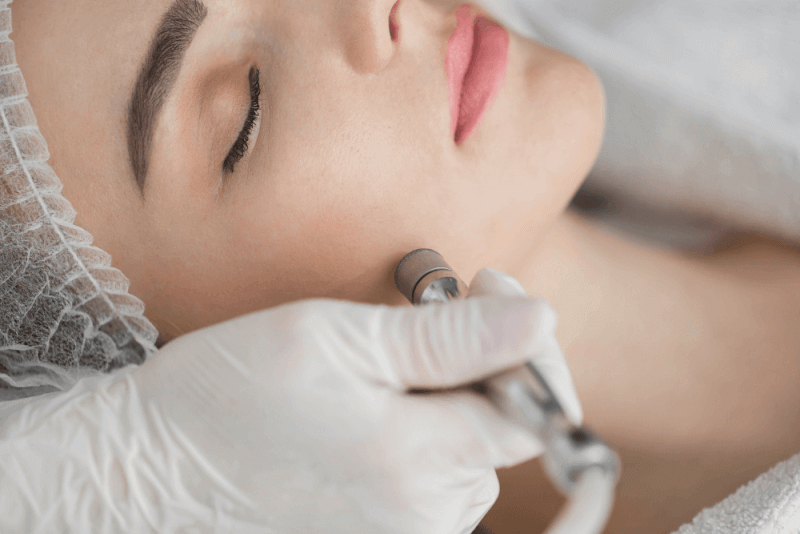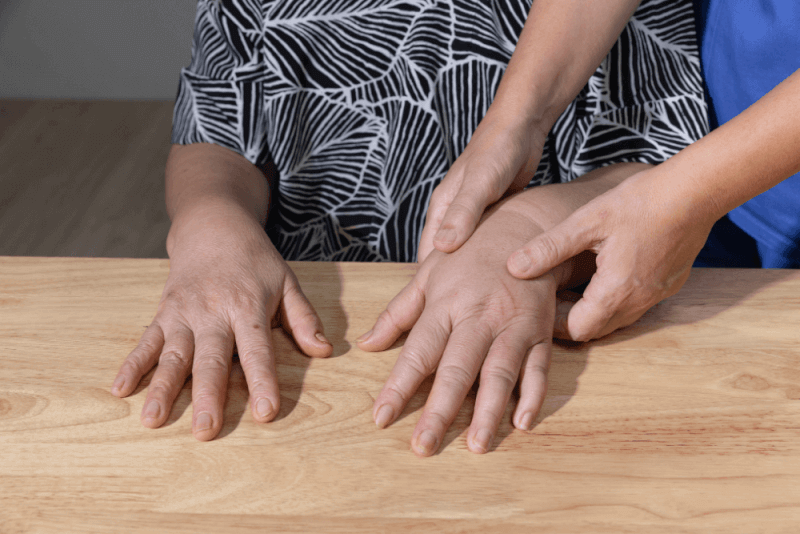30 Second Summary
- Dermabrasion, performed by dermatologists or plastic surgeons, involves the use of a special device that rotates quickly to remove the outer layer of the skin.
- Dermabrasion provides better results for people with fair skin. Those with darker skin tones are more prone to scarring or discoloration, so alternative skin rejuvenation procedures are recommended.
- It is currently used to eliminate wrinkles, fine lines, remove tattoos, and reverse sun damage.
- The initial healing of the skin takes at least 2 weeks. Complete and thorough healing may take a few weeks to months.
What is Dermabrasion?
Dermabrasion is a procedure performed by dermatologists or plastic surgeons using a special device that rapidly rotates to remove the outer layer of the skin. By removing the upper layer of skin, skin rejuvenation is made possible. After the abrasion, the new skin usually appears healthier and smoother.
Dermabrasion works best on people with fair skin. Darker skin tones are more prone to scarring or discoloration, so it is recommended to try alternative skin rejuvenation procedures.
How is Dermabrasion Performed?
The steps involved in dermabrasion are as follows:
- First, the skin is cleaned with antiseptic solutions.
- Local anesthetic methods such as anesthetic spray, topical anesthesia, or local anesthetic injections are applied to make the patient feel comfortable during the procedure.
- The effects of the anesthetic are waited for.
- During the procedure, the doctor moves a small motorized device over the skin with consistent and gentle pressure. The device has an abrasive tip that helps remove the layers of skin.
- After the abrasion is complete, the skin is covered with a non-stick, moist dressing.
- The procedure duration can range from a few minutes to a few hours, depending on the treated area.
What Conditions is Dermabrasion Used For?
Dermabrasion was originally developed to treat acne and smallpox scars. Today, it is used to treat wrinkles, fine lines, remove tattoos, and reverse sun damage. Dermabrasion cannot be used for all skin issues, but it can be used for many conditions, including:
- Age spots
- Crow's feet
- Fine lines
- Melasma and other dark skin spots
- Smallpox scars
- Tattoos
- Red, thick skin on the nose (Rhinophyma)
- Acne scars
- Injury scars
- Surgical scars
- Benign skin growths
- Pre-cancerous skin spots
- Sun damage
- Wrinkles
- Stretch marks
Conditions where dermabrasion is not used include:
- Birthmarks
- Burns
What Are the Advantages of Dermabrasion?
The advantages of dermabrasion for patients include:
- Dermabrasion stimulates collagen production in the skin, which increases the rejuvenating effects and provides a younger-looking skin.
- It offers excellent results for people with fair to medium skin tones. This is because it carries less risk of color distortion compared to other methods.
- It is highly effective for deep scars compared to many other treatments.
What to Consider Before Dermabrasion?
Before undergoing dermabrasion, specialists generally request the following:
- A review of the patient's medical history
- A physical examination
- Understanding the patient's expectations
Things to consider before the procedure include:
- Aspirin and blood thinners should be discontinued before the procedure.
- Smoking should be stopped.
- Antiviral medication should be used before the procedure to prevent viral infections.
- If acne is present, antibiotics should be used.
- Botox treatment 3 days before the procedure may enhance the effectiveness.
- Using retinoid creams a few weeks before the treatment will aid faster healing.
- Avoid sun exposure without protection before the procedure.
What to Consider After Dermabrasion?
Things to consider after dermabrasion include:
- Dressing should be repeated to keep the skin moist and protected.
- Follow-up appointments are necessary. Healing typically occurs within 10 to 14 days, and pain relievers may be necessary during this time.
- Pay attention to the doctor's instructions.
- Do not consume alcohol for the first 48 hours after the procedure.
- Do not use aspirin or ibuprofen for the first week after the procedure.
- Avoid swimming for a month.
- Avoid intense physical activities for 4-6 weeks.
- Follow the necessary care instructions to prevent scabbing.
- Avoid smoking.
- Avoid direct sun exposure for 3-6 months.
- Regular use of prescribed antiviral and antibiotic medications is essential.
Dermabrasion Healing Process
The initial healing of the skin takes at least 2 weeks. Complete and thorough healing can take a few weeks to months. In some cases, due to health conditions, special instructions may be required to support the healing process.
During the healing process, the following symptoms may appear on the skin:
- The treated area will be swollen and red.
- Patients may experience tingling, pain, or a burning sensation.
- As the skin heals, scabbing or wounds may occur.
- New skin growth may cause itching.
Dermabrasion Aftercare
After the procedure, dressing should be done as instructed by the doctor. When to resume your skincare routine will be communicated by your doctor. General rules for resuming skincare include:
- Wait 4-6 weeks before using products like Retin-A, glycolic acid, and Vitamin C.
- Gradually incorporate skincare products into your routine.
- Start with Retin-A for 2 weeks before adding other products.
- After 2 weeks, add Vitamin C.
Who Should Not Undergo Dermabrasion?
Some medical conditions and medications may prevent a person from being a suitable candidate for dermabrasion. The following conditions should avoid dermabrasion:
- Rosacea due to infection risk
- Blood, immune, or skin disorders that slow down healing
- Recent facelift or brow lift surgeries
- Burn scars
- Dark skin tone
- Herpes simplex infection
- Keloid conditions that cause scarring
- Recent acne treatments
- Skin sensitivity to cold
Dermabrasion Complications
Dermabrasion rarely causes complications, but the most common complications include:
- Small white spots that disappear after the skin heals, often seen in people with acne rosacea
- Temporary or permanent skin discoloration
- Temporary or permanent darkening of the skin from sun exposure in the days or months after the procedure
- Enlarged pores, usually temporary
- Scarring
- Swelling
- Infection







